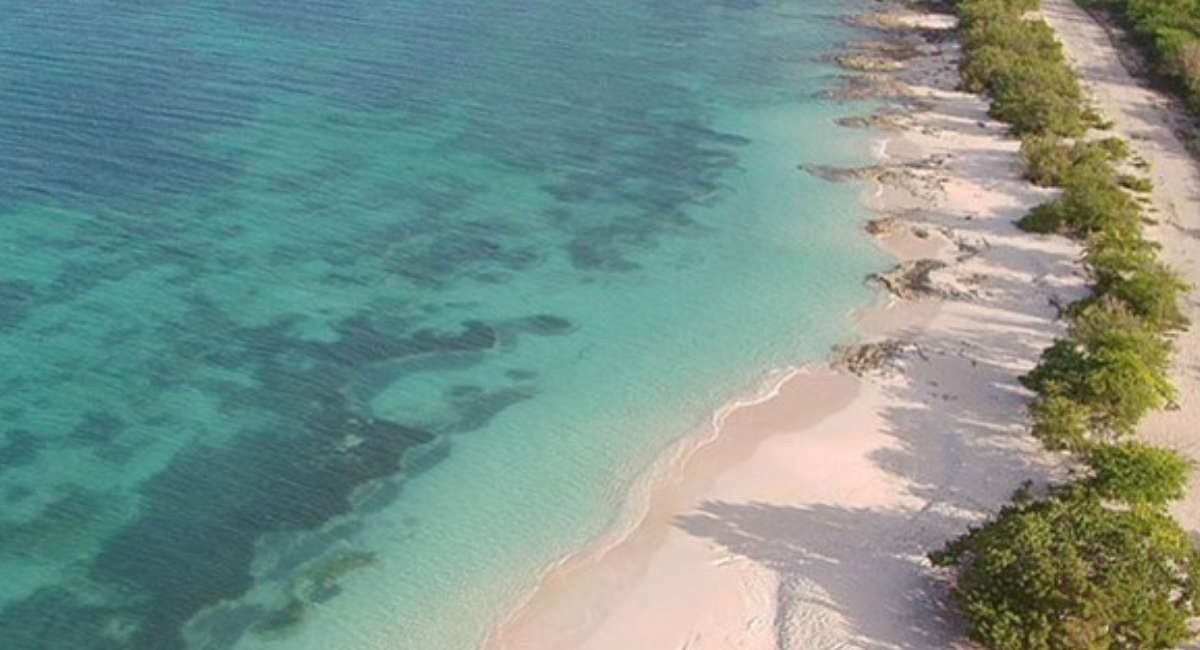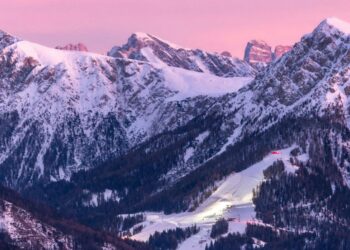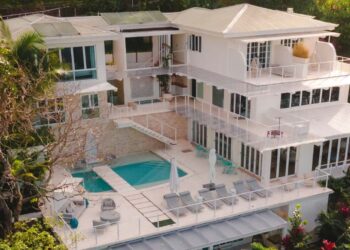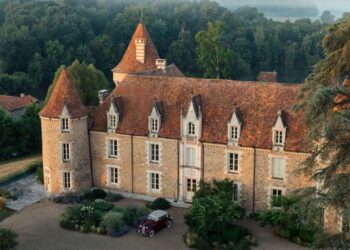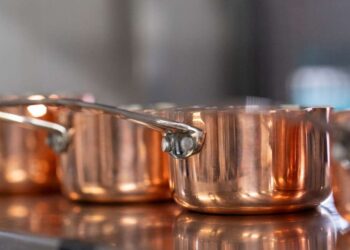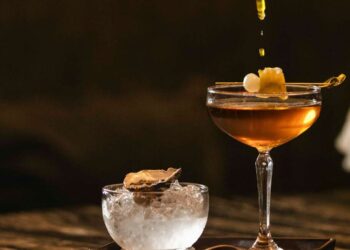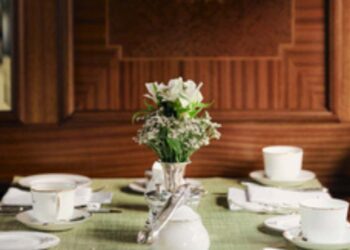Last year I spent four blissful days on the Caribbean island of Antigua. At Curtain Bluff, the island’s only Relais and Chateaux property, I climbed the “stairway to heaven” (a.k.a. Bluff House) to watch the sun set, snorkeled daily from the resort’s dive boat, sipped fresh coconut water under towering palms, and — with my own private tour guide — explored the verdant island, learning about its blouse-and-skirt houses, nautical heritage, and newly emerging gin-making culture.
My only regret: not making it to Antigua’s lesser-known sister island, Barbuda, located 27 miles north and accessible by boat (90 minutes) or plane (20 minutes).
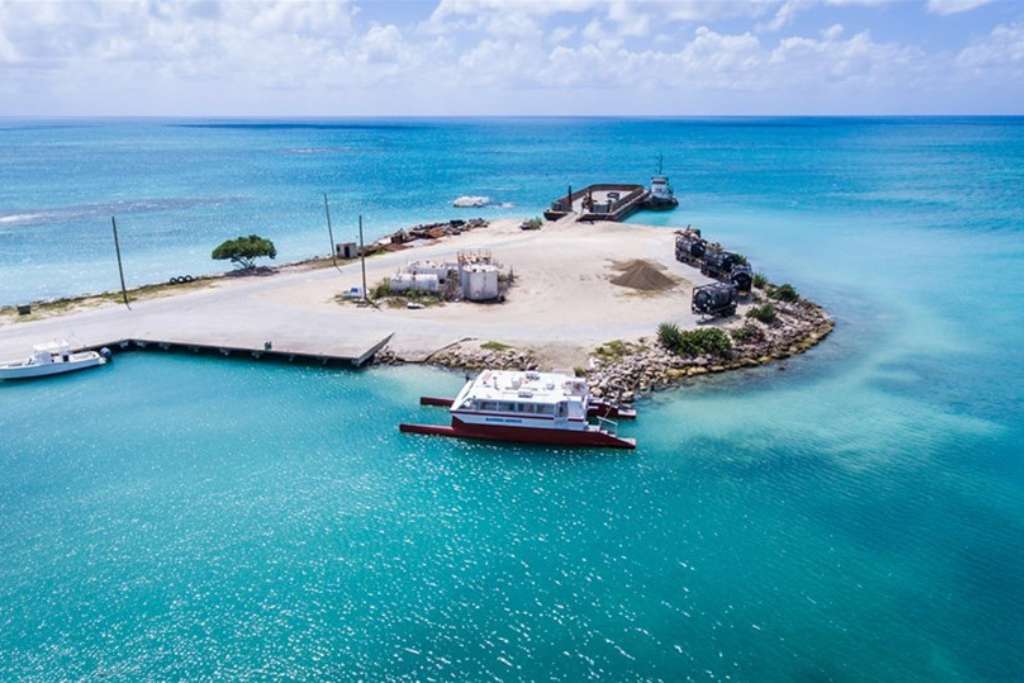
Like true siblings, Antigua and Barbuda, share similar familial traits. Both are beautiful, rich in heritage, and framed by cerulean, see-to-the-bottom waters. And yet, their personalities, also like sisters, are vastly different. Where Antigua is voluptuous and curvy, Barbuda is skinny and petite. And where Antigua is social, the belle of the ball and life of the party, Barbuda is serene and untouched, an accidental eco sanctuary with just 1,500 residents and 17 miles of pink sand beach.
But don’t let Barbuda’s shyness fool you. As we learned this year, her natural beauty and quiet demeanor are a sea-siren magnet for drawing exotic creatures (including royalty and A-list celebrities seeking time away from the spotlight) to her rosé-hued shores. Certainly, her beauty lured us in.
Princess Diana Beach
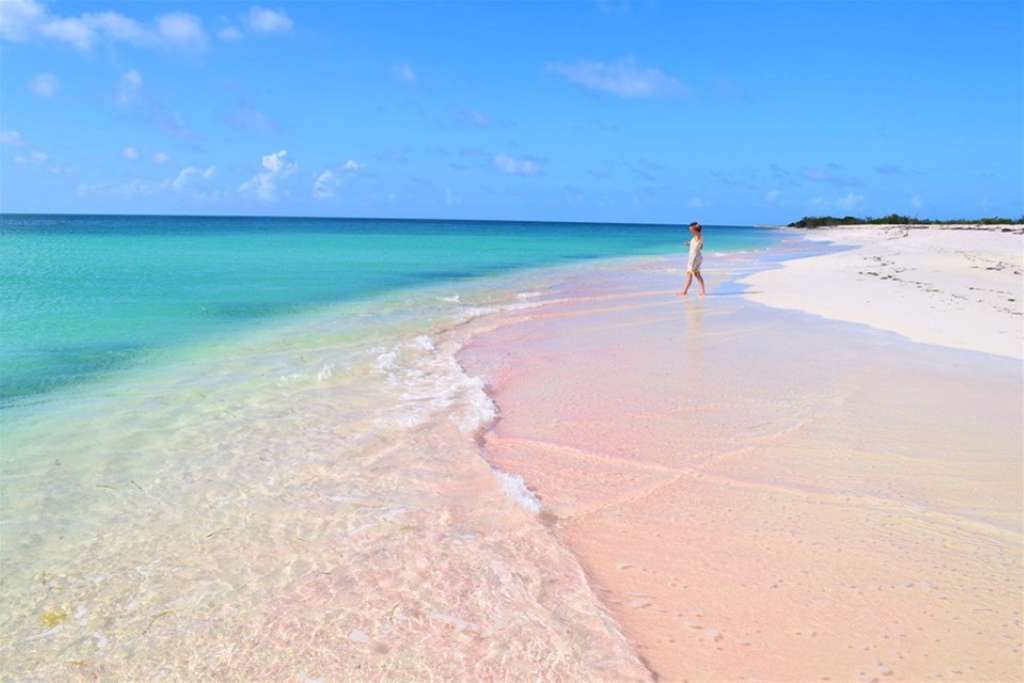
Many islands make the claim, but Barbuda’s sand truly is pink, a combination of crushed reddish-pink shells, coral fragments, and microscopic marine organisms. One of Barbuda’s most beautifully pink beaches is located near Codrington, the island’s main town. Formerly known as Cocoa Point Beach, this secluded, crescent-shaped stretch of rosé sand was renamed Princess Diana Beach in 2011, on what would have been the late Princess’ 50th birthday. She reportedly loved Barbuda, visiting often in the 1990s with her then-young sons Prince William and Prince Harry, and staying always at the exclusive K Club. Her visits were private and the Princess was said to have sought out this particularly quiet beach — and the island’s seclusion and natural beauty — as a retreat from public life. During the 2011 renaming ceremony, 50 lanterns were released into the ocean, in honor of the late Princess’ humanitarian legacy, and the peace and serenity she found here.
Nobu Barbuda
On the beach once home to Princess Diana’s beloved K Club now sits actor and film director Robert De Niro’s Nobu Barbuda. All of the classic Nobu favorites like miso black cod, rock shrimp tempura, and wagyu beef sliders are on the menu, but expect a few chic island touches and infusions as the concept goes beyond just dining. Day trippers (from Antigua) as well as those overnighting on Barbuda can reserve the ‘Beach Club Experience” which includes a private beach cabana for the day complete with butler service (sun loungers, towels, elevated snacks and cocktails). A private sunset omakase dinner on the beach or Japanese robata barbeque (grilled Barbudian spiny lobster, fresh-caught fish, and conch) can also be arranged, as can beachfront massages (for an additional fee).
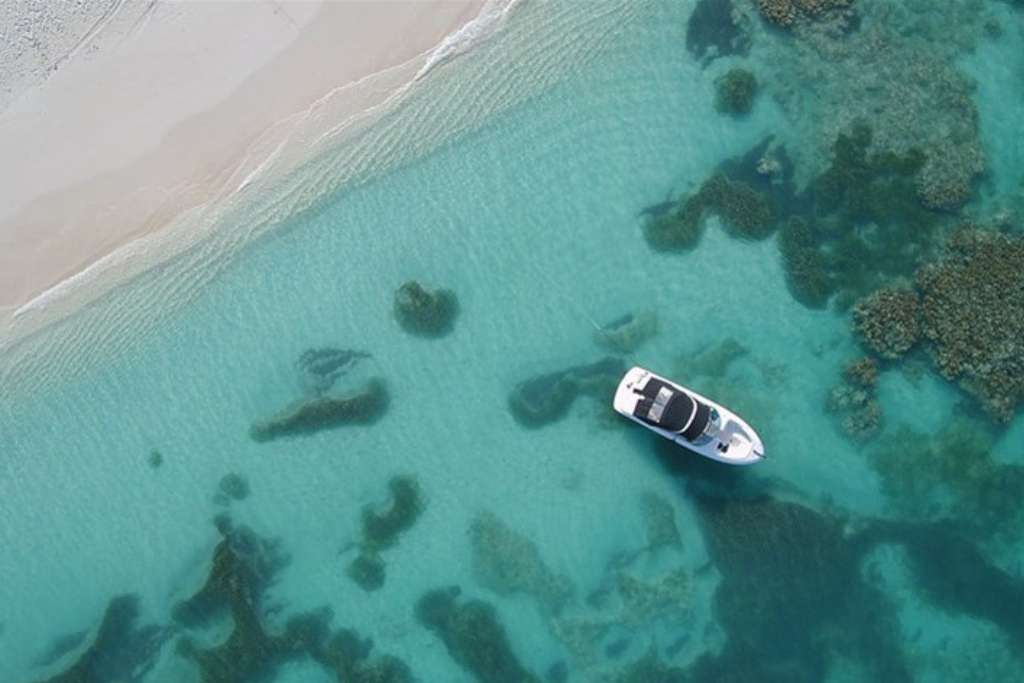
Barbuda Belle
I first saw the stunning thatched-roof Barbuda Belle via video when a friend (a luxury travel advisor) splashed down in the pink sand with her two young children for the week. (The hotel is accessible only by boat or prop plane.) I remember thinking how Robinson Crusoe, Gilligan’s Island, it all felt. But in an elevated French touch-and-feel kind of way. There are only eight rooms here, all beachfront (more palm trees than beds), and a completely private two-bedroom villa (which accommodates up to eight). There is a vibey onsite restaurant serving local island and French flavors: conch, lobster, foie gras, and a small spa with L’Occitane treatments (from the south of France). But mostly time is spent savoring the beauty of the pink sand, green palms, and turquoise sea.
Barbuda Cottages and Uncle Roddy’s Beach Bar and Grill
A different type of accommodation option comes with Barbuda Cottages, an enclave of private beachfront homes, ranging from one to three bedrooms. While painted exteriors come in every Caribbean color of the rainbow — yellow, green, purple, blue, orange, pink — interiors boast direct ocean views (some from every window of the house), stylish furnishings, and full kitchens.
The Cottages are also home to Uncle Roddy’s Beach Bar and Grill, a casual, toes-in-the-sand dining experience overlooking the sea. Family owned since 2006, Uncle Roddy’s is most heralded for its grilled Barbuda lobster, local catch of the day, and conch fritters, although the mahi fish tacos, burgers, and dark chocolate crème brûlée are also popular. Bartender Roland is known to personalize every drink, while owners Kelcina and Oliver are often onsite conversing with guests. The fact that the restaurant is solar powered only adds to Barbuda’s untamed vibe.
Frigate Bird Sanctuary
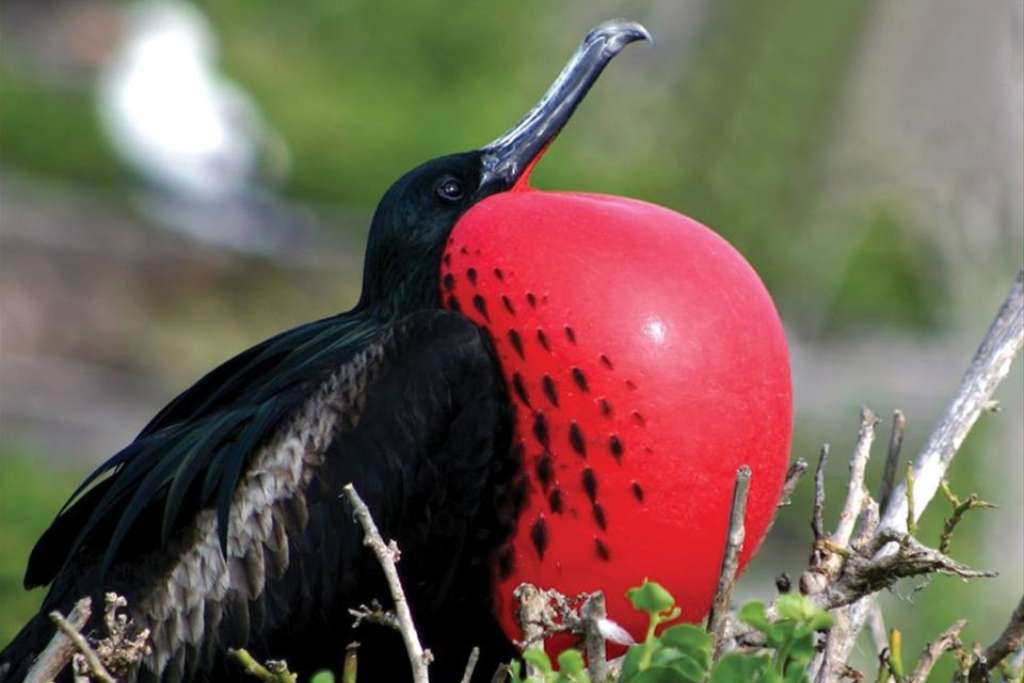
Even non-birdwatchers are in awe of Barbuda’s Frigate Bird Sanctuary found in Codrington Lagoon National Park, which spans the western coastline of Barbuda. The frigate bird colony is the second largest (after the Galapagos) in the Western Hemisphere. More than 2500 of the black-feathered, red-throated birds are said to roost in the mangroves. One of the best times to visit (all visits are via licensed sea taxi and must be pre-arranged) is mating season, which spans from September to April. Watch the birds’ interpretation of tango as the males line up — their red throats inflated and puffed — as the females fly overhead, circling, eyeing, deciding, until finally landing at their chosen partner to begin the mating ritual. Other bird species spotted in the national park include pelicans, gulls, tropical mockingbirds, Christmas birds, and West Indian whistling tree duck. The park is also home to sea turtle nesting beaches and a juvenile lobster habitat.
The Cave Petroglyphs at Two Foot Bay
Another Barbuda nature treasure trove comes at Two Foot Bay National Park. Here, expect to see more island wildlife: iguanas, crabs, and more tropical birds, along with lush foliage and flowers. A highlight though are the caves which Barbudans have used over centuries. One of the most notable is Indian Cave, showcasing ancient petroglyphs left by the Arawak or Siboney (Barbuda’s original inhabitants).
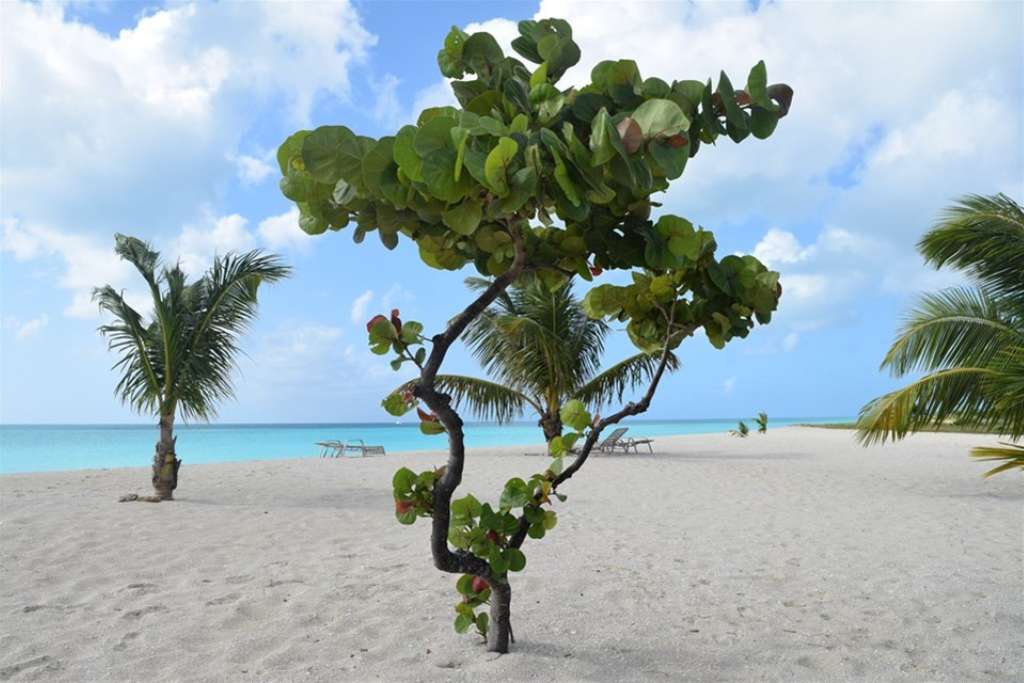
The Donkeys
For me, one of the most unexpected sightings comes in the wild donkeys roaming the island. Many contend that Barbuda has more donkeys than people, and at an estimated 3,000-plus donkeys, the speculation may be true. The mules were first introduced as work animals during colonial times, but have since become feral. Find them (early morning or toward dusk) strolling through Codrington village or in the afternoons napping under shade trees. They are also frequenters of the northeast coast (near Two Foot Bay) where they love the scrub brush, and around Codrington Lagoon where they come to drink from the natural watering holes.
Not-to-Miss Souvenir
Leaving an island as beautiful and serene as Barbuda is never easy of course. But local artisan and entrepreneur Odelia Deazle, founder of Barbuda Emblem, has found a way for travelers to keep the island close to their hearts. Her unique handcrafted jewelry — a collection of bracelets, necklaces, anklets, and earrings — elegantly incorporates Barbuda’s pink sand and sea shells into the design.
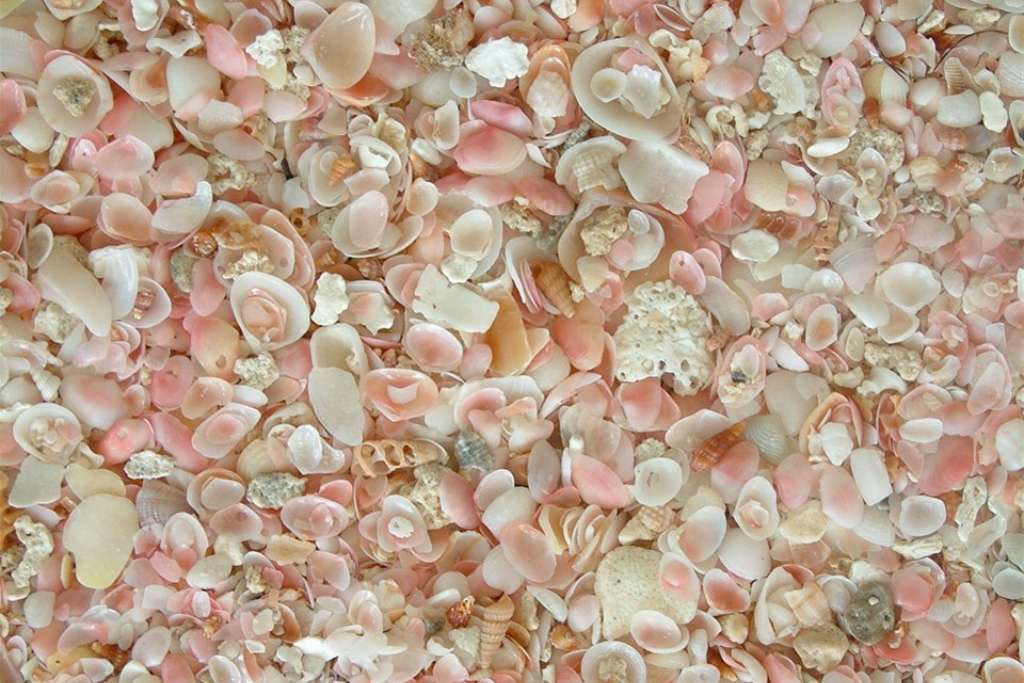
The idea came to her after ordering glass bottles (per her mother’s request) to fill with pink sand and use as decor. But when the bottles arrived, they were much smaller than expected — teeny tiny in fact, and Deazle promptly hid them underneath her bed. But one day, the idea to fill the miniature bottles with pink sand and transform them into jewelry “just came” to the young entrepreneur.
“I thought why not wear [the pink sand],” says Deazle. “Why not carry it with you wherever you go? And then, it became more of a sentimental idea — the idea of creating a feeling of home, especially for locals who don’t live on the island anymore. But also for visitors who can bring a piece of Barbuda back to family members and friends.”
Now, back home, I find myself fiddling with my own pink-sand necklace; my fingers dancing across the time-capsule-like emblem in a transportive, daydreamy kind of way. The pink-sand jewel calls me back, reminding me of an island still untouched, naturally beautiful, and instantly calming.
Antigua’s sea-siren baby sister.

